Effects of Post Heat Treatment on the Mechanical Properties of Cold-Rolled Ti/Cu Clad Sheet
Abstract
1. Introduction
2. Experimental Method
3. Results and Discussion
4. Conclusions
- Titanium clads were successfully fabricated and the bond strength at the interface was improved through heat treatment. The average tensile strength of the heat-treated clad was 353 MPa while maintaining excellent tensile and yield strength, and the elongation was improved by more than two times from 21% to max. 53%.
- In the titanium clad, Ti and Cu components diffused into each other across the Ti/Cu interface during the post heat treatment, and diffusion bonding occurred at the interface. In addition, the thickness of the diffusion layer increased with an increase in the heat-treatment time, and much stronger interface bonding of the Ti/Cu clad occurred.
- Hardness at the interface increased gradually with increasing heat-treatment time. The tensile strength of the clad decreased slightly after the heat treatment, whereas the elongation increased significantly. This can greatly improve the forming processability of the Ti-Cu dissimilar clad plate.
Author Contributions
Funding
Conflicts of Interest
References
- Lee, J.S.; Son, H.T.; Oh, I.H.; Kang, C.S.; Yun, C.H.; Lim, S.C.; Kwon, H.C. Fabrication and characterization of Ti-Cu clad materials by indirect extrusion. J. Mater. Process. Technol. 2007, 187–188, 653–656. [Google Scholar] [CrossRef]
- Hosseini, M.; Danesh Manesh, H. Bond strength optimization of Ti/Cu/Ti clad composites produced by roll-bonding. Mater. Des. 2015, 81, 122–132. [Google Scholar] [CrossRef]
- Bae, D.H.; Jung, S.J.; Cho, Y.R.; Jung, W.S.; Jung, H.S.; Kang, C.Y.; Bae, D.S. Effect of Pre-Heat Treatment on Bonding Properties in Ti/Al/STS Clad Materials. Korean J. Met. Mater. 2009, 47, 573–579. [Google Scholar]
- Ha, J.S.; Kim, I.K.; Hong, S.I. Effect of Post-HPT Heat Treatment on the Mechanical Performance in Ti/Cu-Cr/S20C Clad Materials. Adv. Mat. Res. 2012, 557–559, 385–389. [Google Scholar] [CrossRef]
- Kim, Y.K.; Shin, P.W.; Hong, S.I. Effect of Heat Treatment on the Mechanical Properties and Interface Structure of 3-ply Ti/Cu/Ti Clad Composite. Adv. Mat. Res. 2015, 1102, 51–54. [Google Scholar] [CrossRef]
- Guoyin, Z.; Xiaobing, L.; Jinghua, Z.; Hao, Z. Interfacial characterization and mechanical property of Ti/Cu clad sheet produced by explosive welding and annealing. J. Wuhan Univ. Technol.Mater Sci. Ed. 2015, 30, 1198–1203. [Google Scholar]
- Saboktakin, M.; Razavi, G.R.; Monajati, H. The Investigate Metallurgical Properties of Roll Bonding Titanium Clad Steel. Int. J. Appl. Phys. Math. 2011, 1, 177–180. [Google Scholar] [CrossRef]
- Bae, D.S.; Kim, W.J.; Eom, S.C.; Park, J.H.; Lee, S.P.; Kim, M.J.; Kang, C.Y. Effect of Post Heat Treatment on Bonding Interfaces in Ti/STS409L/Ti Cold Rolled Clad Materials. Trans. Mater. Process. 2011, 20, 140–145. [Google Scholar] [CrossRef]
- Taguchi, O.; Lijima, Y. Diffusion of copper, silver and gold in α-titanium. Philos. Mag. A 1995, 72, 1649–1655. [Google Scholar] [CrossRef]
- Iijima, Y.; Hoshino, K.; Hirano, K.-I. Diffusion of Titanium in Copper. Metall. Trans. A 1977, 8A, 997–1001. [Google Scholar] [CrossRef]
- Murray, J.L.; Baker, H. (Eds.) Alloy Phase Diagrams; ASM International: Materials Park, OH, USA, 1987; Volume 3, p. 180. [Google Scholar]
- Kim, I.K.; Ha, J.S.; Hong, S.I. Effect of Heat Treatment on the Deformation and Fracture Behaviors of 3-ply Cu/Al/Cu Clad Metal. Korean J. Met. Mater. 2012, 50, 939–948. [Google Scholar]
- Kim, I.K.; Hong, S.I. Roll-Bonded Tri-Layered Mg/Al/Stainless Steel Clad Composites and their Deformation and Fracture Behavior. Metall. Mater. Trans. A 2013, 44, 3890–3900. [Google Scholar] [CrossRef]
- Osório, W.R.; Cremasco, A.; Andrade, P.N.; Garcia, A.; Caram, R. Electrochemical behavior of centrifuged cast and heat treated Ti–Cu alloys for medical applications. Electrochim. Acta 2010, 55, 759–770. [Google Scholar] [CrossRef]
- Mori, T.; Kurimoto, S. Press-formability of stainless steel and aluminum clad sheet. J. Mater. Process. Technol. 1996, 56, 242–253. [Google Scholar] [CrossRef]
- Shin, B.S.; Yoon, S.Y.; Ha, C.S.; Yun, S.K.; Bae, D.H. Fabrication and Mechanical Characterization of the Mg-Zn-RE/Al1050 Clad Sheet. Korean J. Met. Mater. 2010, 48, 116–121. [Google Scholar] [CrossRef]
- Bae, D.H.; Choi, Y.J.; Chung, W.S.; Bae, D.S.; Cho, Y.R. Effect of Tension-Test Temperature on Fracture Behavior and Mechanical Properties in STS/Al/Cu Clad Materials. Korean J. Met. Mater. 2009, 47, 811–818. [Google Scholar]
- Song, J.Y.; Kim, I.K.; Lee, Y.S.; Hong, S.I. Interfacial Reaction on Heat Treatment of Roll-bonded STS304/Al1050/STS439 Clad Materials and its Effect on the Mechanical Properties. Korean J. Met. Mater. 2011, 49, 910–915. [Google Scholar]
- Kim, I.K.; Song, J.Y.; Lee, Y.S.; Hong, S.I. Effect of Interfacial Reaction Layer on Mechanical Properties of 3-ply Mg/Al/STS Clad-metal. Korean J. Met. Mater. 2011, 49, 664–670. [Google Scholar] [CrossRef]
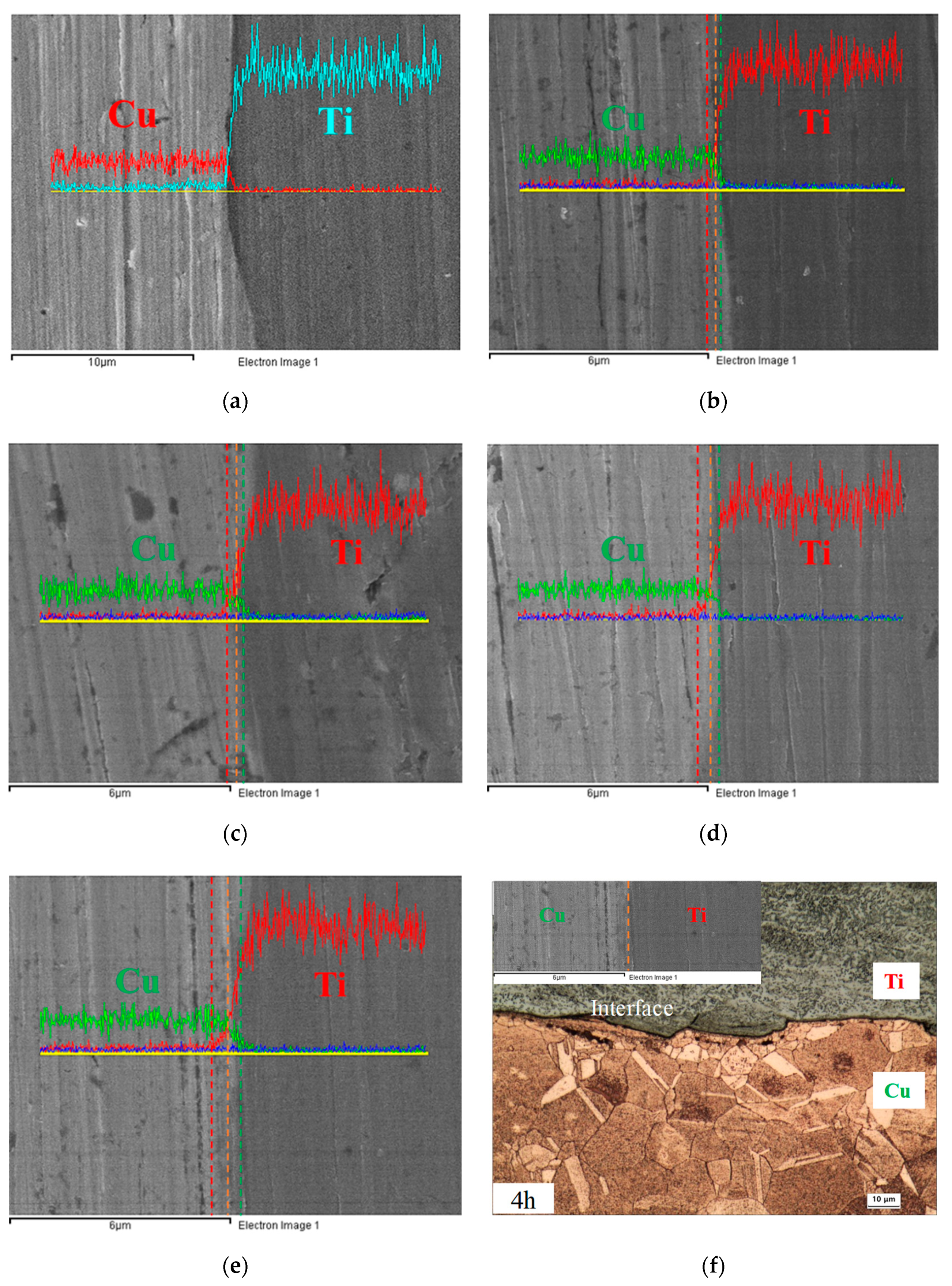
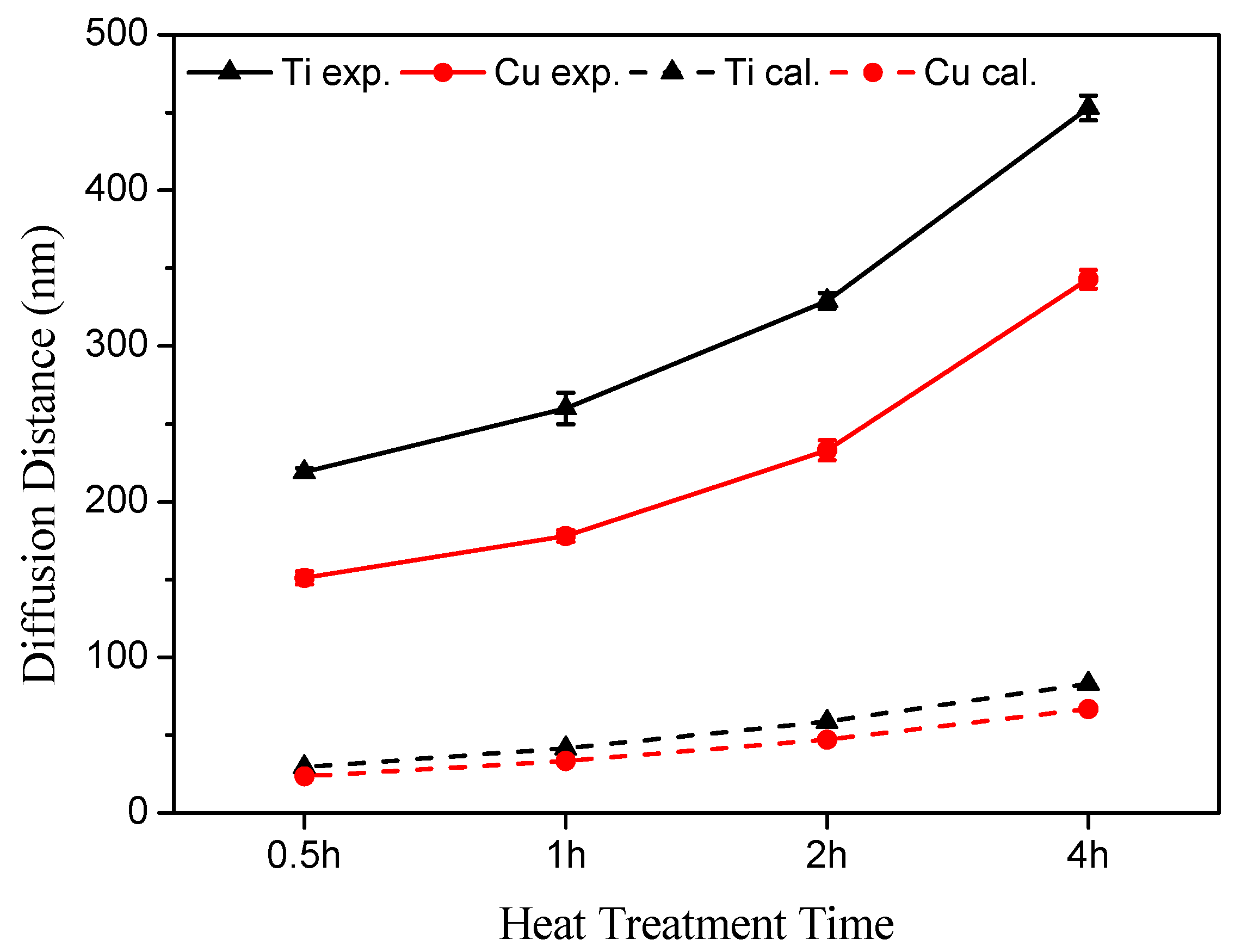
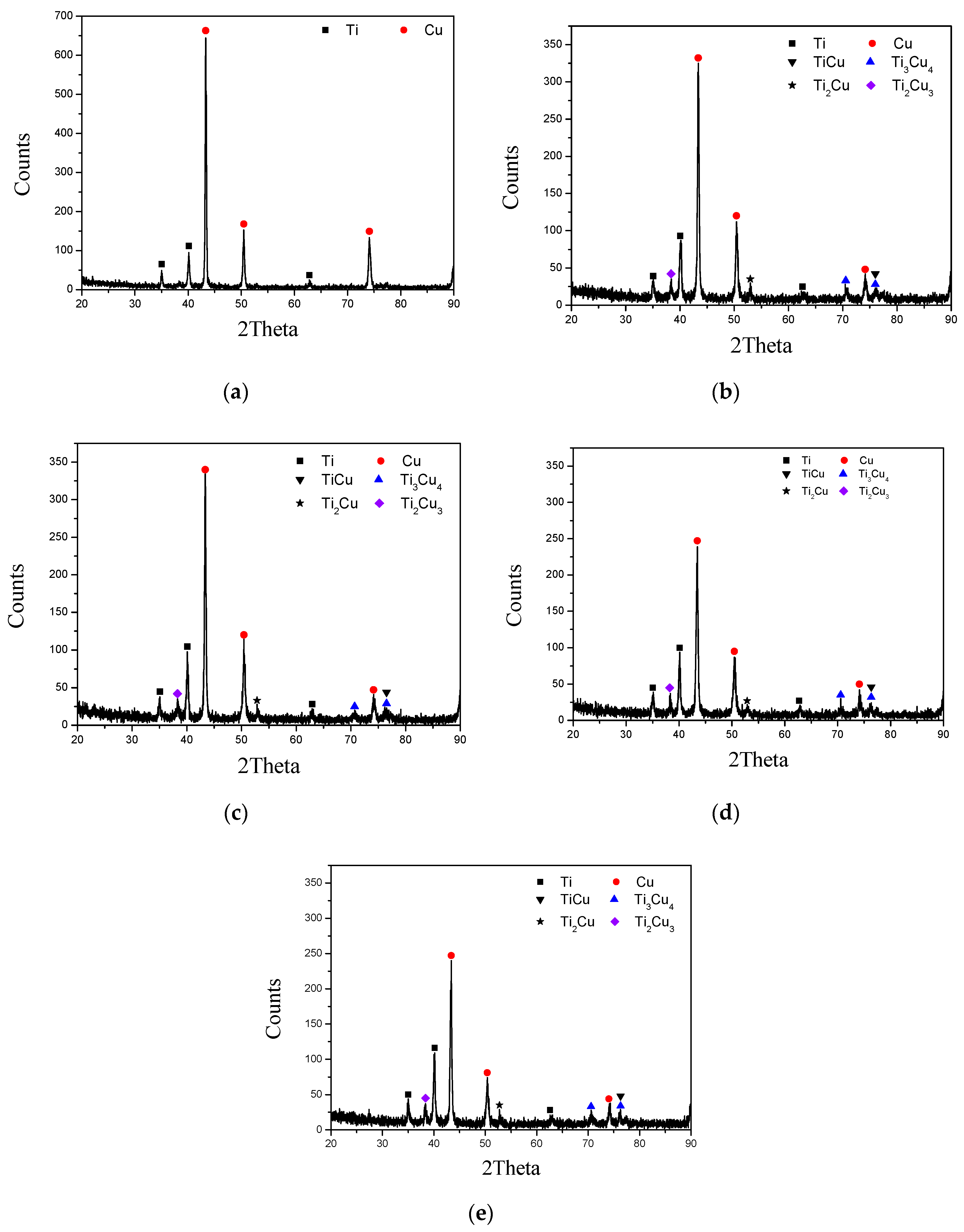
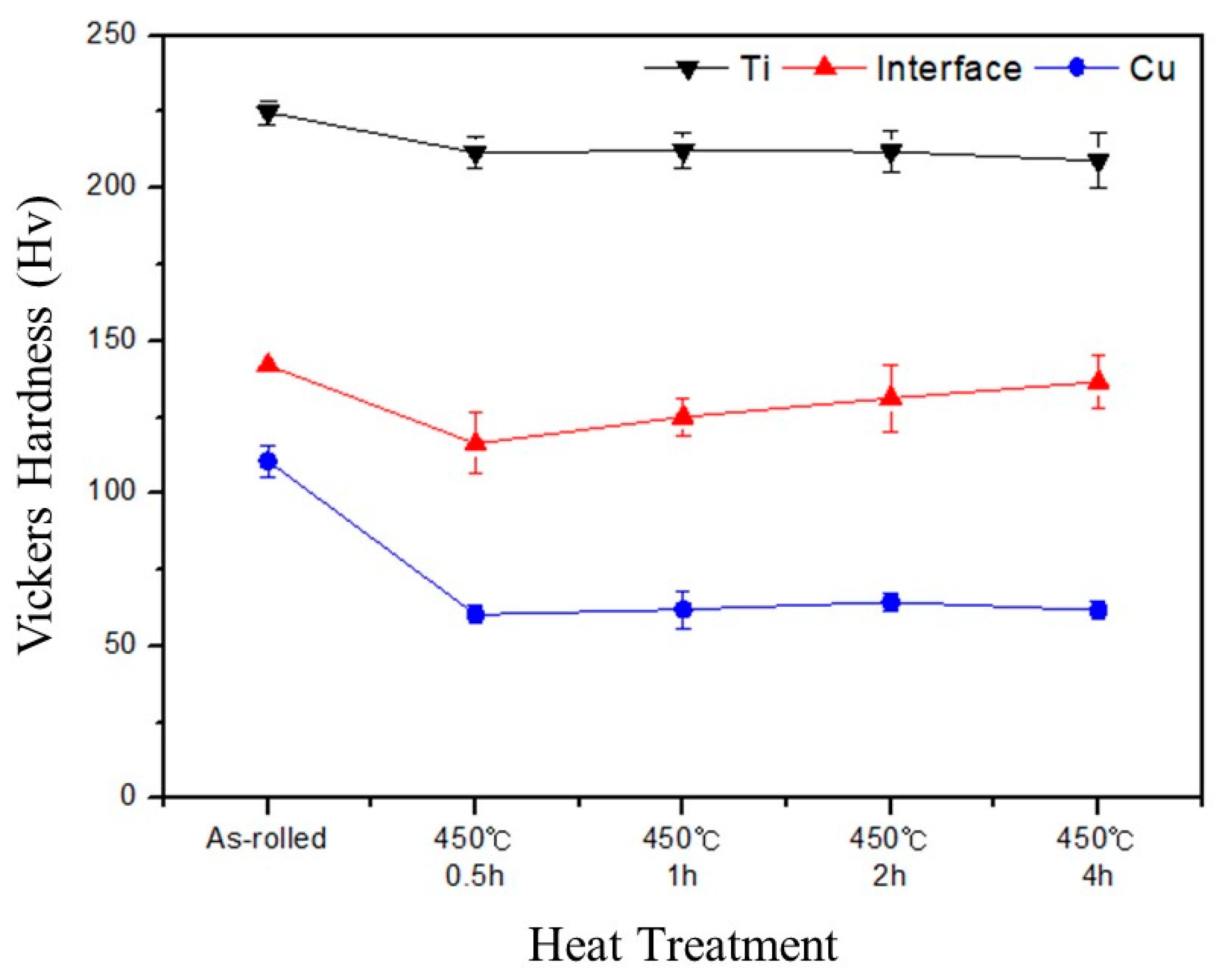
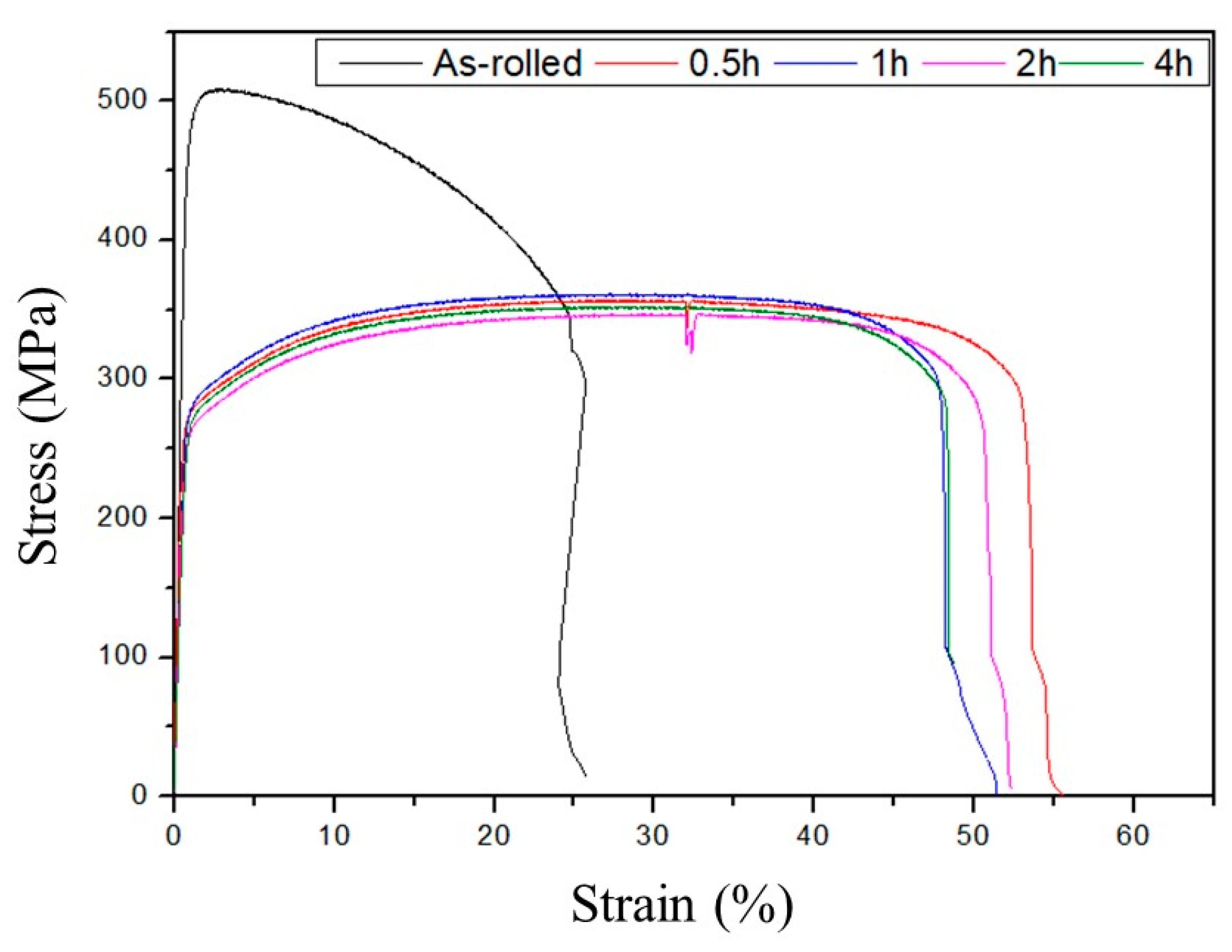
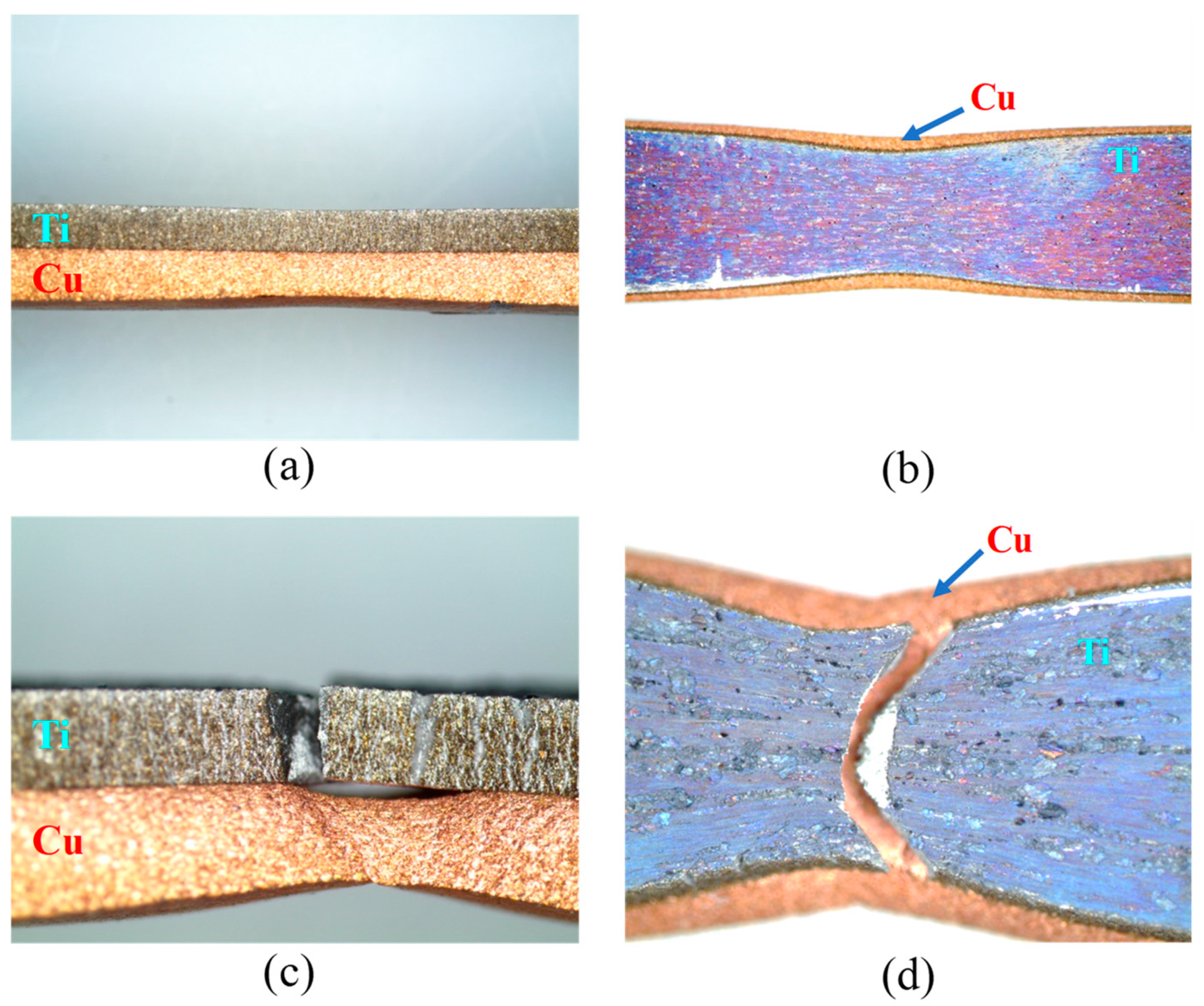
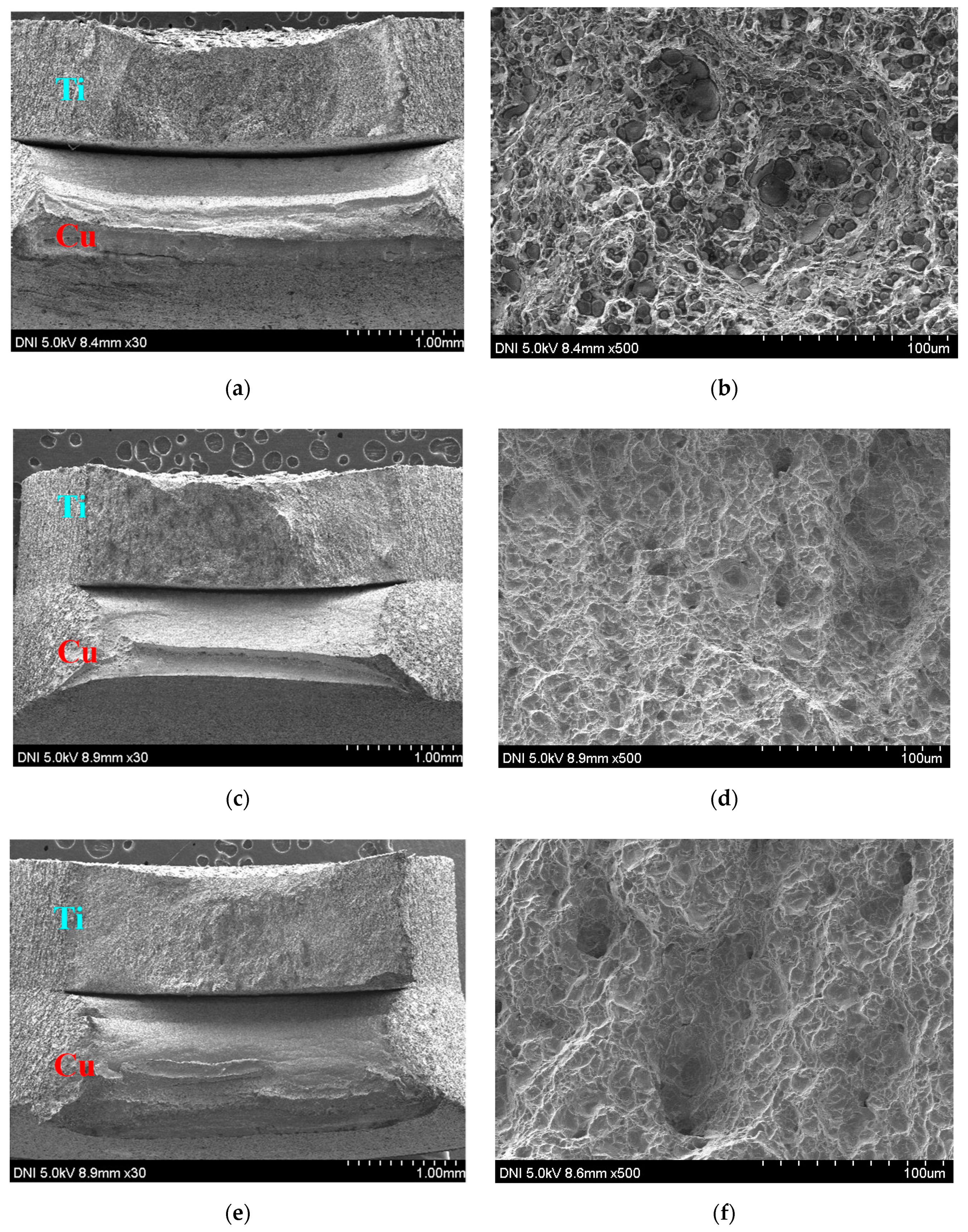
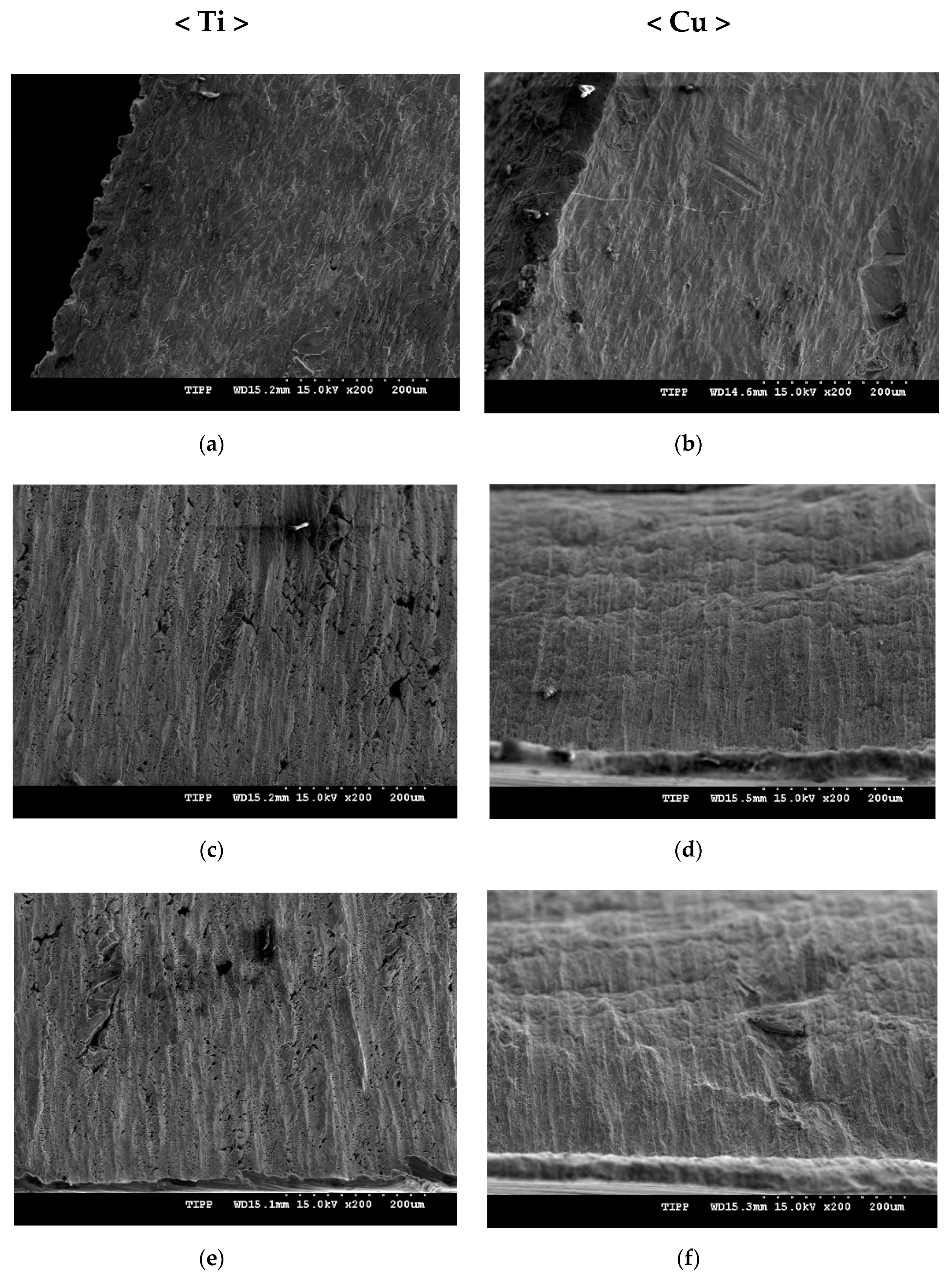
| Unit (nm) Specimens | Ti Distance | Cu Distance |
|---|---|---|
| 0.5 h | 219 ± 2.5 | 151 ± 4.2 |
| 1 h | 260 ± 10 | 178 ± 3.7 |
| 2 h | 329 ± 5.2 | 233 ± 6.4 |
| 4 h | 453 ± 8.1 | 343 ± 6.1 |
| Properties Specimens | YS (MPa) | UTS (MPa) | El (%) |
|---|---|---|---|
| Ti | 310 | 344 | 20 |
| Cu | 254 | 277 | 36 |
| As-rolled | 455 ± 14 | 507 ± 3 | 21.4 ± 2.9 |
| 450 °C 0.5 h | 270 ± 13 | 357 ± 1 | 53.3 ± 2.7 |
| 450 °C 1 h | 272 ± 1 | 360 ± 1 | 47.8 ± 1.3 |
| 450 °C 2 h | 254 ± 6 | 346 ± 1 | 50.4 ± 1.2 |
| 450 °C 4 h | 266 ± 7 | 352 ± 2 | 47.9 ± 1.1 |
Publisher’s Note: MDPI stays neutral with regard to jurisdictional claims in published maps and institutional affiliations. |
© 2020 by the authors. Licensee MDPI, Basel, Switzerland. This article is an open access article distributed under the terms and conditions of the Creative Commons Attribution (CC BY) license (http://creativecommons.org/licenses/by/4.0/).
Share and Cite
Youn, C.-S.; Lee, D.-G. Effects of Post Heat Treatment on the Mechanical Properties of Cold-Rolled Ti/Cu Clad Sheet. Metals 2020, 10, 1672. https://doi.org/10.3390/met10121672
Youn C-S, Lee D-G. Effects of Post Heat Treatment on the Mechanical Properties of Cold-Rolled Ti/Cu Clad Sheet. Metals. 2020; 10(12):1672. https://doi.org/10.3390/met10121672
Chicago/Turabian StyleYoun, Chang-Suk, and Dong-Geun Lee. 2020. "Effects of Post Heat Treatment on the Mechanical Properties of Cold-Rolled Ti/Cu Clad Sheet" Metals 10, no. 12: 1672. https://doi.org/10.3390/met10121672
APA StyleYoun, C.-S., & Lee, D.-G. (2020). Effects of Post Heat Treatment on the Mechanical Properties of Cold-Rolled Ti/Cu Clad Sheet. Metals, 10(12), 1672. https://doi.org/10.3390/met10121672




